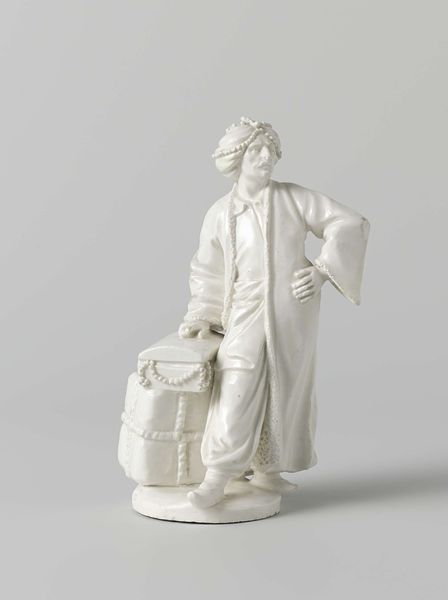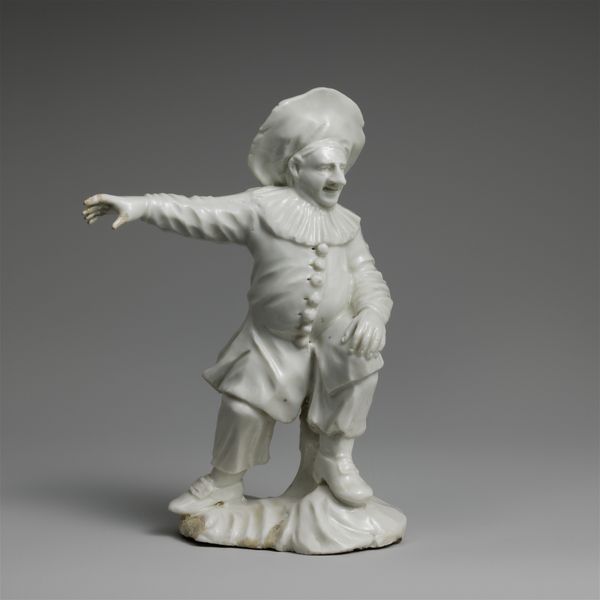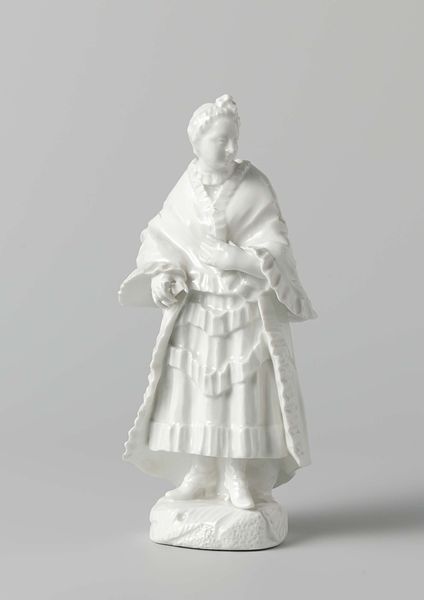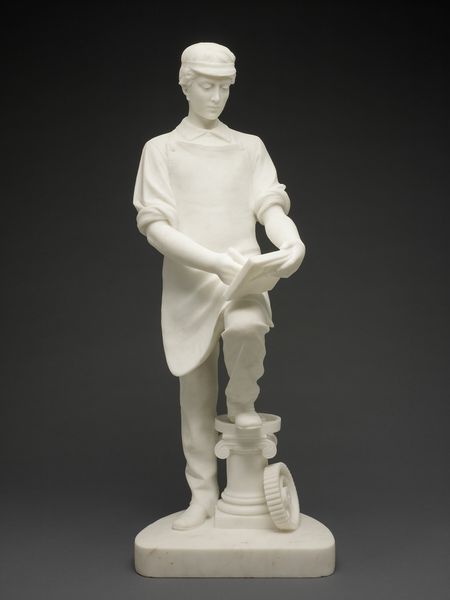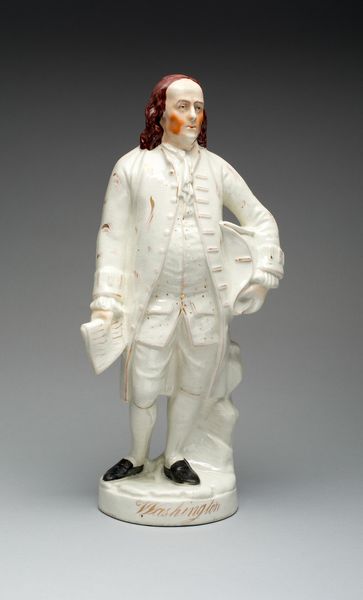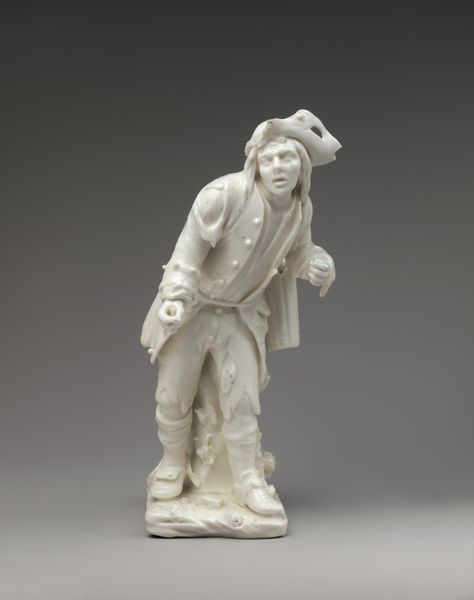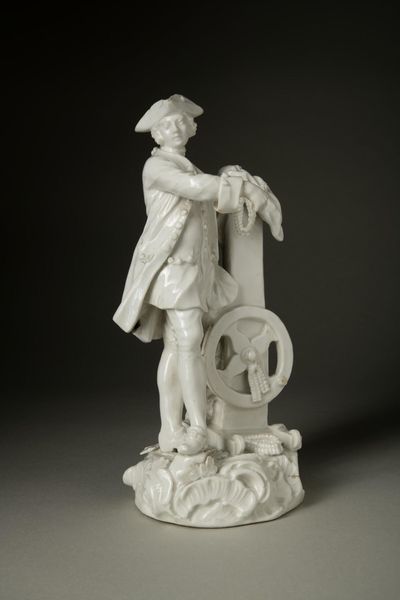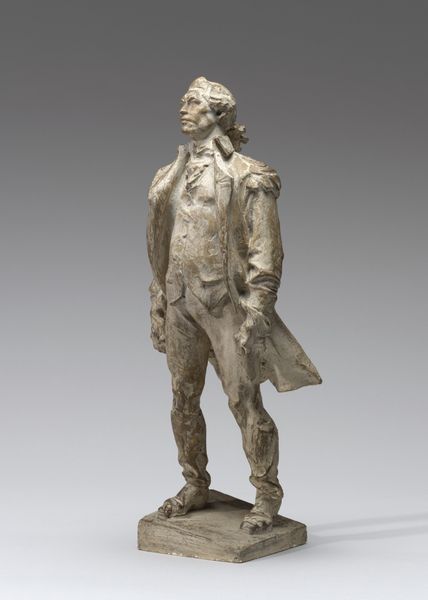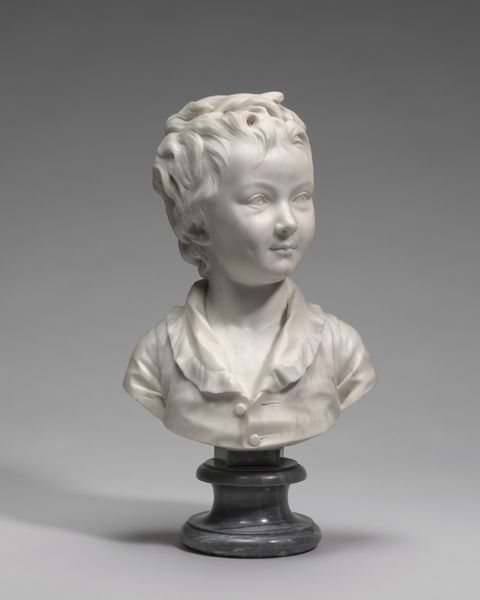
porcelain, sculpture
#
portrait
#
porcelain
#
figuration
#
sculpture
#
genre-painting
#
rococo
Dimensions: height 18.5 cm, width 9.2 cm, depth 7.1 cm
Copyright: Rijks Museum: Open Domain
This figure of a man was made by Wilhelm Caspar Wegely in 18th-century Germany, using porcelain. Porcelain is an extraordinary material, made by combining kaolin clay with powdered petuntse - a feldspathic rock, which when fired at high temperatures, vitrifies. The result is a strong, translucent ceramic prized for its delicate appearance. The figure’s pure white color results from the lack of impurities in the clay and the high firing temperature. This porcelain object, molded and fired in a kiln, showcases the skilled traditions of ceramic artistry, a testament to the fusion of artistic vision, scientific precision, and the relentless pursuit of perfection. The figure’s elegance and refinement reflect the taste of the 18th-century elite, who avidly collected porcelain as a symbol of wealth and status. But it also speaks to the labor involved in the production process. The mining and preparation of the clay, the molding and firing of the figure, all required the coordinated effort of many hands. So, when you look at this figure, remember that it is not just a beautiful object, but also a product of complex social and economic forces.
Comments
No comments
Be the first to comment and join the conversation on the ultimate creative platform.
